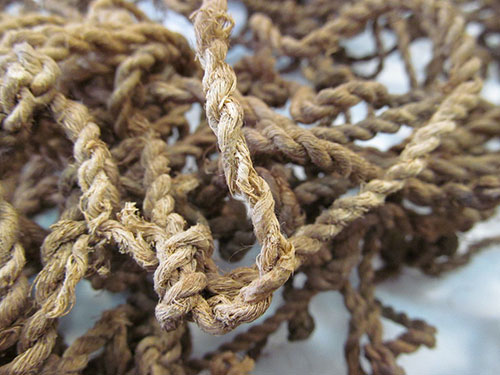What are these four conservators so busily repairing? A net for catching antelopes! This interesting object is part of the new temporary exhibition Dr Livingstone, I presume? currently on at National Museum of Scotland. The net was collected by Livingstone himself and is one of a number of objects in the exhibition which were sent back from Africa to what was then the Scottish Industrial Museum, now the National Museum of Scotland.
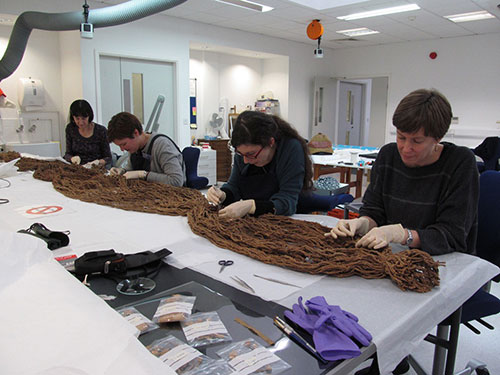
The South African net is made from the bark of the baobab tree (probably Adansonia digitata). One of the most versatile trees in Africa, the baobab is a source of food, water, fuel and much more, including plant fibres used in the making of cordage. The bark has been processed to form 2-ply S-twist cords, which have been knotted in turn to create the net’s structure. The entire object is over 3.5m in length and 1m in width.
When the net was examined in the lab, it was discovered that many of the cords were completely or almost broken, a condition likely resulting from use.

Two Textile Conservators and two Artefact Conservators then put their heads together to devise a method for repairing the damaged cords.
After testing out a few different materials and techniques, we decided upon using paper twists to replicate the cords. The paper chosen to form the twists was a Japanese mulberry or kozo paper, which is made from the long inner bark fibres of the paper mulberry or kozo tree (Broussonetia papyrifera). Mulberry paper is a popular repair material in conservation as it has considerable strength because of its long fibres, is chemically stable and available in a variety of weights.
Strips of three different thicknesses were first cut with feathered edges to reproduce the varying cord diameters found in the net. The paper was then toned with watercolours to produce three different shades of brown.
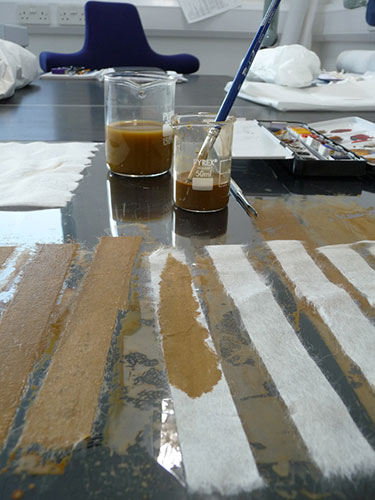
Once the shade and thickness of the paper was matched to the cord to be repaired, the conservator created the twist with her fingers, wound it around the damaged cord, and secured it in position with wheat starch paste.
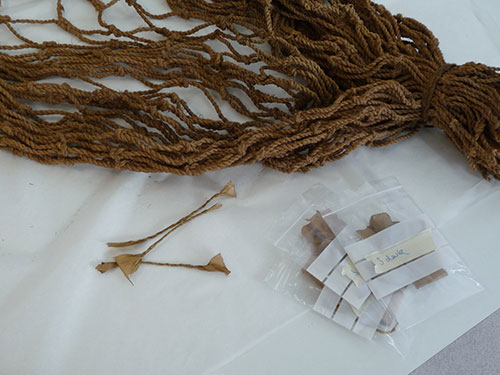
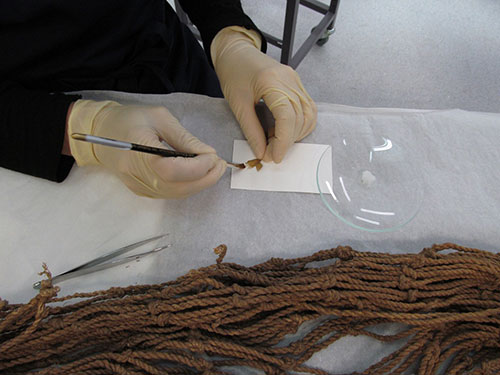
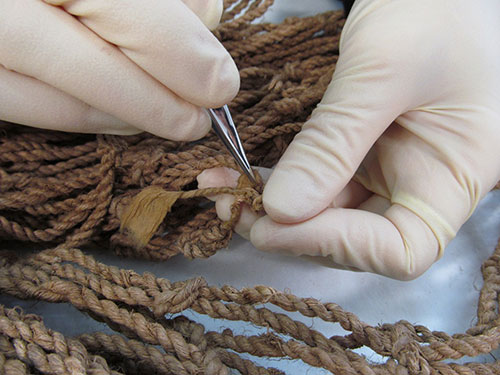
After the repair of around fifty damaged cords, the net was finally stable enough to go on display in the Livingstone exhibition!
